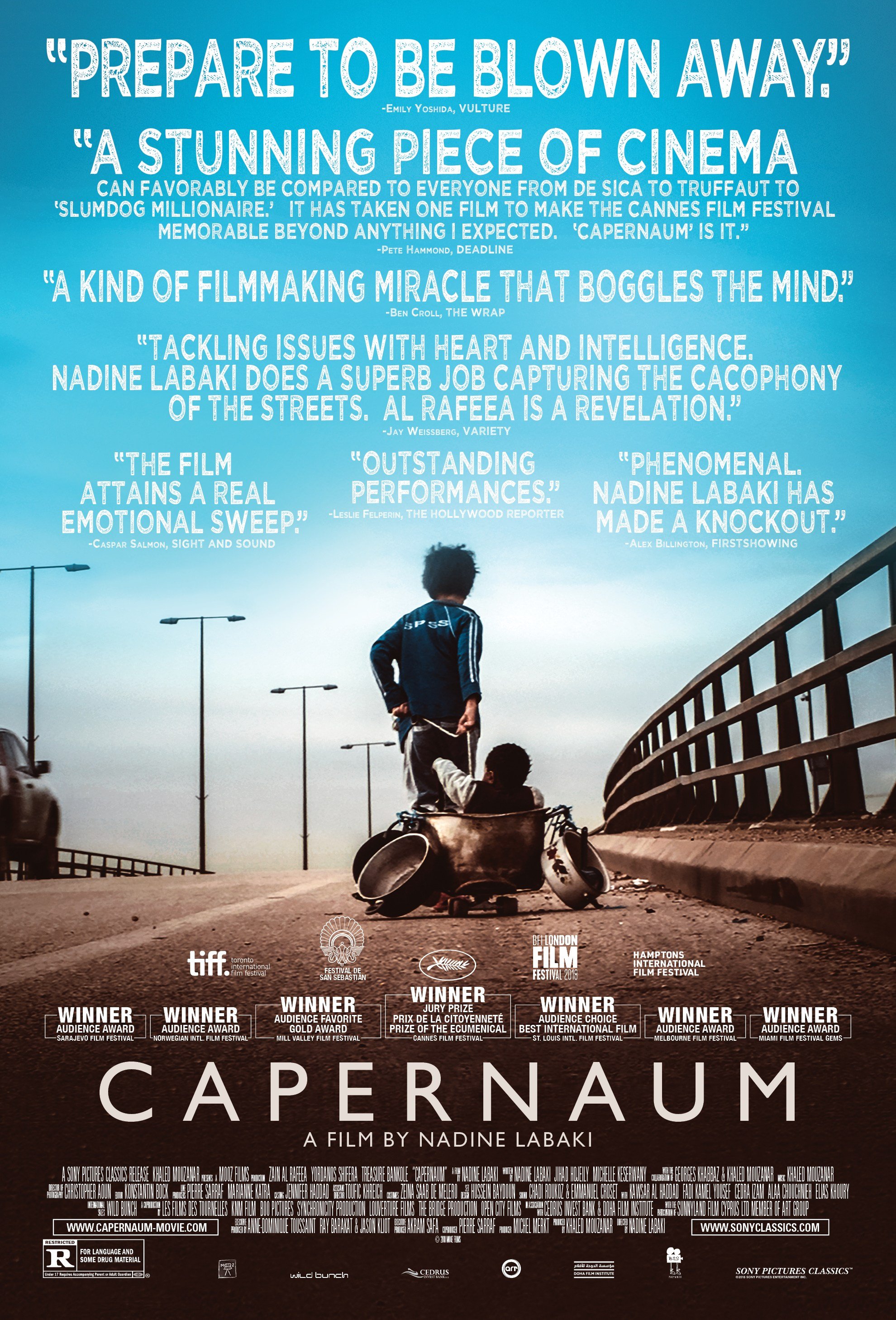
How to be at home
In 2010, the poet, musician Tanya Davis wrote the beautiful poem, How to Be Alone, and from this we collaborated to make the film which you can see here. Ten years later, Tanya has written the gorgeous and poignant poem for these times, How to Be at Home, and we found ourselves collaborating again! This animation was created in my home studio in Halifax, Nova Scotia, while in social isolation through the spring and summer of 2020.
Poem written by Tanya Davis
Directed, animated and edited by Andrea Dorfman

Capernaum
Capernaüm ("Chaos") tells the story of Zain, a Lebanese boy who sues his parents for the "crime" of giving him life. The film follows Zain as he journeys from gutsy, streetwise child to hardened 12-year-old "adult" fleeing his negligent parents, surviving through his wits on the streets, where he meets Ethiopian migrant worker Rahil, who provides him with shelter and food, as Zain takes care of her baby son Yonas in return. Zain later gets jailed for committing a violent crime, and finally seeks justice in a courtroom.

the wisdom of trauma
In The Wisdom of Trauma, we travel alongside physician, bestselling author and Order of Canada recipient Dr. Gabor Maté to explore why our western society is facing such epidemics. This is a journey with a man who has dedicated his life to understanding the connection between illness, addiction, trauma and society.

UMBILICAL
This piece explores how my mother’s abusive relationship with my father shaped my own experiences in a boarding school as a child in China. The societal pressures on my mother to hide her abuse and her desire to protect me ultimately created a situation where I was subjected to the same societal pressures. Our shared desires for intimacy, safety, and normalcy have been constantly at odds with the realities that surround us. Through a conversation as adults, my mother and I learn to understand each other and support one another.

THE QUIET GIRL
The Quiet Girl is a beautiful film about the pain of neglect, the recuperative powers of feeling loved, and the sorrow that grows from loss. –Marc Hauser


A dissociation between moral judgments and justifications
To what extent do moral judgments depend on conscious reasoning from explicitly understood principles? We address this question by investigating one particular moral principle, the principle of the double effect. Using web‐based technology, we collected a large data set on individuals’ responses to a series of moral dilemmas, asking when harm to innocent others is permissible. Each moral dilemma presented a choice between action and inaction, both resulting in lives saved and lives lost. Results showed that: (1) patterns of moral judgments were consistent with the principle of double effect and showed little variation across differences in gender, age, educational level, ethnicity, religion or national affiliation (within the limited range of our sample population) and (2) a majority of subjects failed to provide justifications that could account for their judgments.

Damage to the prefrontal cortex increases utilitarian moral judgements
The psychological and neurobiological processes underlying moral judgement have been the focus of many recent empirical studies. Of central interest is whether emotions play a causal role in moral judgement, and, in parallel, how emotion-related areas of the brain contribute to moral judgement. Here we show that six patients with focal bilateral damage to the ventromedial prefrontal cortex (VMPC), a brain region necessary for the normal generation of emotions and, in particular, social emotions,,, produce an abnormally ‘utilitarian’ pattern of judgements on moral dilemmas that pit compelling considerations of aggregate welfare against highly emotionally aversive behaviours (for example, having to sacrifice one person’s life to save a number of other lives),. In contrast, the VMPC patients’ judgements were normal in other classes of moral dilemmas.
